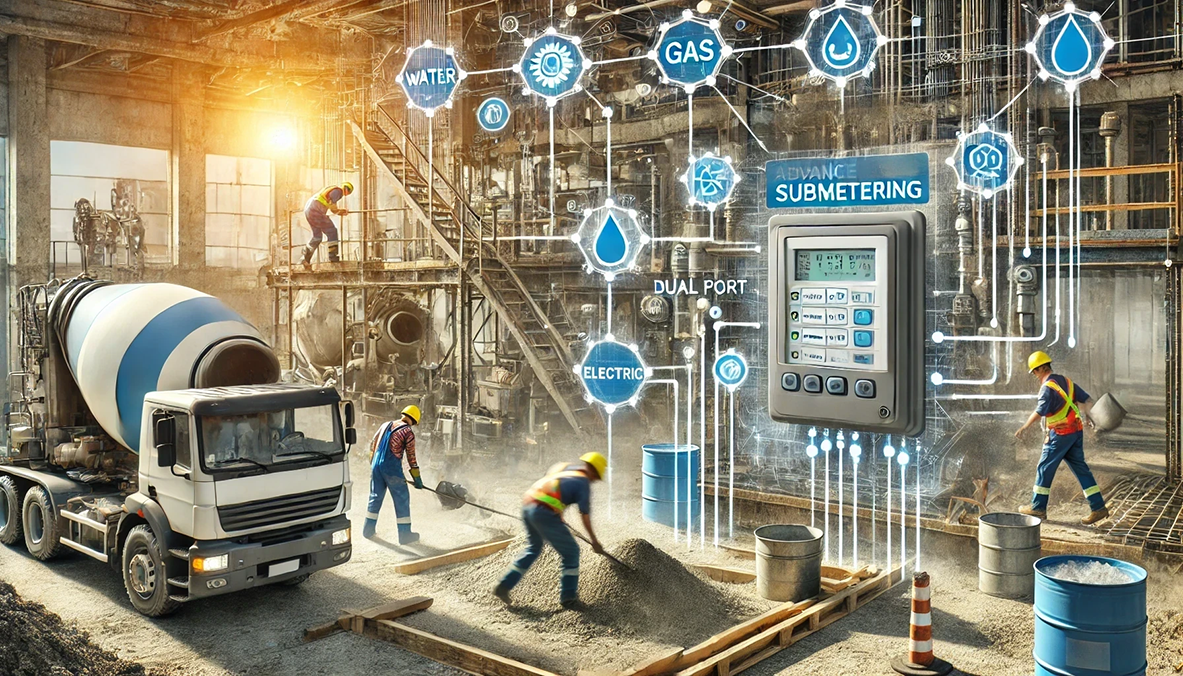Tackling High Water Bills on Construction Sites with Advanced Submetering
Construction submetering is a critical aspect of managing utility usage on construction sites. With the right submetering solutions, construction companies can monitor water, gas, and electric usage more effectively, ensuring efficient resource management and cost control. This blog post delves into the various types of submeters used in construction, the specific challenges faced, and the technological solutions available to address these challenges.
Overview of Construction Submetering Needs
In construction environments, the primary types of submeters used include water submeters, gas submeters, and electric submeters. Water submeters are essential for tracking water usage during various construction activities, gas submeters are used to monitor gas consumption, particularly in projects involving heating or gas-powered equipment, and electric submeters are crucial for measuring electricity usage across different parts of the construction site.
Specific Challenges in Construction Submetering
Construction sites present unique challenges for submetering, including high variability in usage, harsh environmental conditions, and limited installation points. Utility usage can vary significantly depending on the phase of construction. Equipment must withstand exposure to dust, moisture, and temperature fluctuations. Finding suitable locations for installing submeters can be difficult due to the temporary and evolving nature of construction sites.
Water Usage in Construction Environments
Construction activities often involve high water usage scenarios such as concrete mixing, dust suppression, and cleaning and equipment washing. These activities consume substantial amounts of water, leading to several implications:
- Cost: Increased water usage leads to higher utility bills, impacting project budgets.
- Resource Management: Efficient water management is crucial to avoid wastage and ensure sustainability.
- Regulatory Compliance: Construction companies must adhere to local water usage regulations to avoid fines and penalties.
Technological Solutions
To manage these challenges, businesses can leverage advanced submetering technologies such as dual port transmitters and smart meters. Dual port transmitters offer cost efficiency by using a single dual port transmitter instead of two separate devices, which reduces equipment costs and maintenance requirements. These transmitters also require less space, making them ideal for construction sites with limited installation space. Fewer devices mean a simpler installation process, reducing labor costs and installation time.
For more insights on efficient utility management in construction settings, explore our post, "Maximizing Efficiency with Dual Port Transmitters."
Encoder vs. Pulse Meters
Selecting the right submetering technology is crucial. Understanding the differences between encoder and pulse meters can help make an informed decision. Pulse meters generate a pulse signal for a specific volume of water passing through the meter. They are generally cheaper but can be less accurate due to potential missed pulses and backflow issues. On the other hand, encoder meters provide a digital readout of the exact usage, offering higher accuracy and reliability. They can detect disconnections and provide more detailed usage data.
For more information on choosing the right submetering technology, read our detailed post, "Understanding Pulse and Encoded Meters for Accurate Utility Readings."
Conclusion
Construction submetering presents unique challenges, but with the right technological solutions, companies can effectively manage their utility usage. Understanding the specific needs of construction environments, such as high water usage scenarios, and leveraging advanced technologies like dual port transmitters, encoder meters, and runtime devices can lead to more efficient and cost-effective utility management. By addressing these challenges head-on, construction companies can ensure they are operating efficiently and in compliance with regulatory requirements.
Engage with Us
Have Questions? Contact Us for expert advice.
Join the Conversation: Follow us on LinkedIn.
Thank you for visiting our site. We look forward to helping you optimize your utility management!
